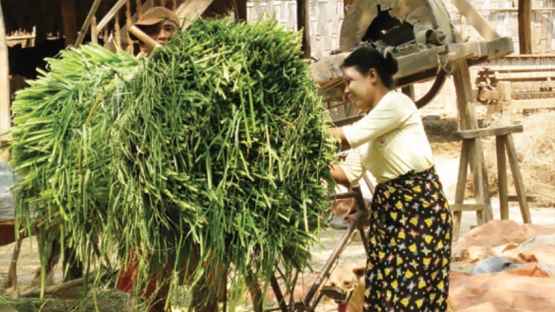After 6 years of research by more than 300 researchers from 25 countries and US $53 million in funding, the cow genome has been defined. The Bovine Haplotype Map, as it is called, characterizes genetic diversity among breeds. Having this map allows cattle breeders to select for features they want in their cows – in particular, high quality milk. Until now, guaranteeing quality milk required inseminating cows, then waiting for the female offspring to grow and produce calves and the milk to feed them, at a cost of US $25 000 to US $50 000 per bull. Most genetic improvements in cattle come through males, because each male can produce tens of thousands of females. Already, cattle breeders are eagerly mapping single nucleotidepolymorphisms in most of their bulls, with an eye toward identifying which single nucleotide-polymorphisms are linked with good milk and other desirable qualities.
Conserving genetic diversity. Traditionally, because of the pressure for higher animal output and the trend to promote the “advantages” of a small number of highly specialized breeds from the developed world, farmers in developing countries have been replacing or cross-breeding local breeds with exotic animals. Although the genetic improvement has been quite successful in many instances, practicing selective inbreeding and use of exotic lines and breeds while neglecting or making blanket upgrades of indigenous animals has eroded genetic diversity. Indigenous animals are also underutilized in conventional breeding programmes, due to misconceptions about their value and failure to identify breeds or animals carrying advantageous traits.
Improving local feeds. The Joint Division is involved in efforts to improve the efficiency of using locally available feed resources through development, adaptation and transfer of economically viable and “simple-to-use” feeding strategies for sustainable livestock production. Examples of nuclear technologies implemented include: using 13C,14C, 15N, 125I, 51Cr, 3H, 32P, 35S as tracers to evaluate nutritive value, passage rate and voluntary feed intake, and using doubly-labelled water (18O and 2H labelled) and deuterium oxide (D2O) dilution for measurement of energy expenditure and body composition.



